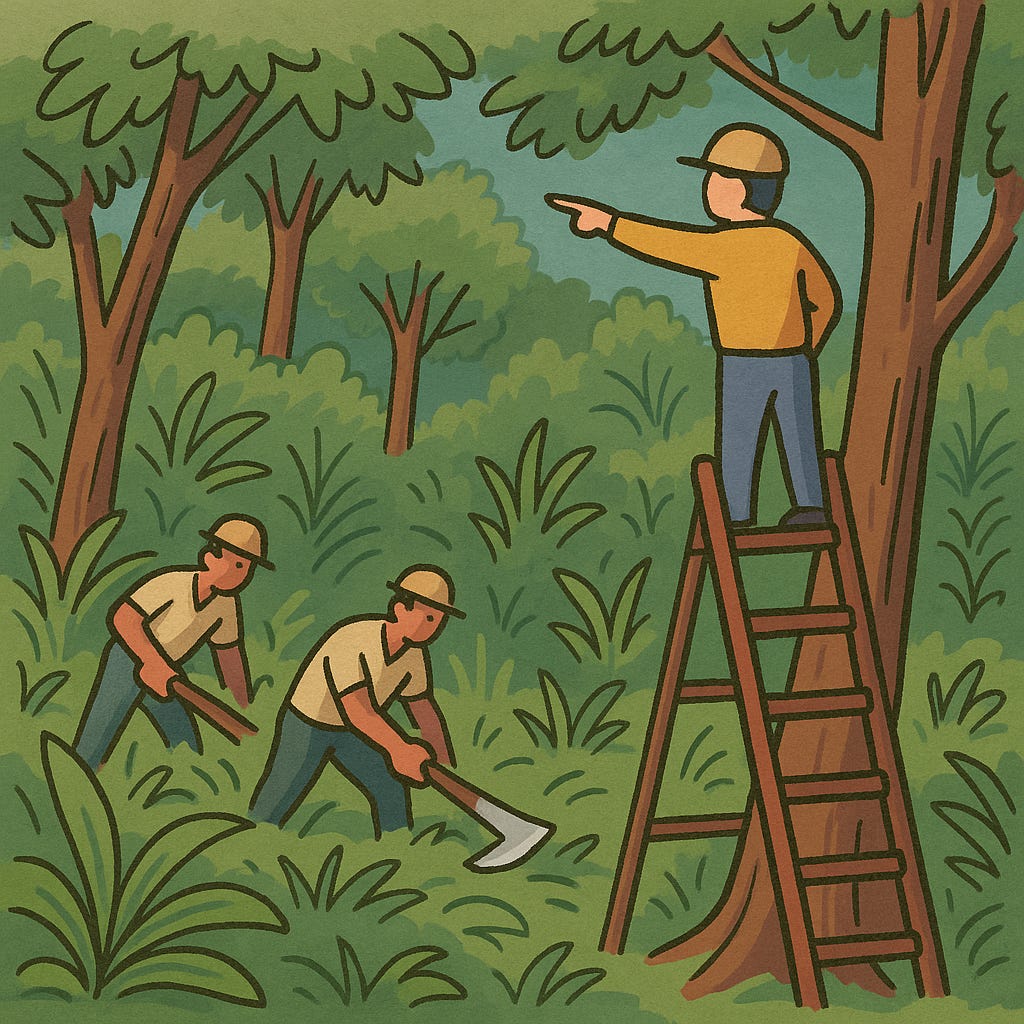You’re at an archery contest. This isn’t your first time shooting with the bow, mind you—you’re pretty accurate after spending all summer aiming for dime-sized targets.
In fact, you’ve hit the bullseye nearly every time you’ve tried. You figure: these targets are way smaller than the ones they’ll have during the contest, so if you can hit these, the ones in the contest will be a snap.
It’s true: when you peer down at the end of the range, the targets are much bigger than the ones you’re used to.
Wait—targets? There’s more than one of them?
You take aim at the target that seems like it might be yours (there are a lot of them!), and you take your best shot. Your best shot is excellent! You nail the bullseye, right in the center.
The only issue is you’ve nailed the bullseye on the wrong target. You’ve taken the energy and time to aim and focus on the dead center, but you’re simply looking in the wrong place. All that precision ends up being wasted.
This reminds me of when we would go to the bowling alley during the summer or over the weekend. Bowling alleys were fun all the way from elementary through high school, and even though I never got very good, I generally always enjoyed the activities there—if I got bored, the standup arcade section provided plenty of enticing alternatives.
I’m not sure if we ever inadvertently got a strike on the wrong lane, but we might have done this deliberately once or twice. Pranks were fun.
If bowling isn’t your game, maybe this old parable about business ownership and management will resonate. There’s a crew working in a jungle, boldly hacking away at the wilderness and blazing a trail. The person who gets up on the ladder and shouts out, wrong direction!—that’s the manager.
The person who says to the manager, wrong jungle!—that’s the owner.
All three of these little parables drive home the same underlying idea. It goes back to that idea that intelligence is made up of two parts, and you’ve got to have both aspects taken care of if you want to have a good result.
Aiming for the right target (or making sure you’re standing in front of the right bowling lane, or being sure you’re in the right jungle) is part of the architecture of thinking. You’ve got to sort through your options carefully first, then you can apply the energy required to aim precisely.
I’m confident you’ve found yourself aiming carefully at the wrong target (please do feel free to share a personal example of this). I know I have, and while I continue to make the same mistake from time to time, the severity and frequency of this mistake have come down considerably. These days, I spend considerably more time making sure I’m not in the wrong jungle.
Even if you’re careful, though, it can happen to the best of us. Ever detail clean the bathroom because your spouse or parents asked you to, only to realize they meant the other bathroom? That old toothbrush you just wore out by scrubbing in between tiles was all for naught.
That’s being precisely wrong.
Don’t get me wrong: I’m not trying to suggest that precision isn’t important. There are some tasks where either you’re exactly right with an input, or the whole thing goes wrong. Coding used to be like this, and there are still dozens of other activities where the details need to be just so.
I’m just saying that aiming at the right target is almost always more important.





When you have kids, it's very easy to be precisely wrong. If my daughter ever asks me to help her pick between two options, I somehow always pick the wrong one. Every time.
Now that I think of it, that example doesn't fit with your definition of being precisely wrong.
But this comment answers the wrong question perfectly, so it qualifies as precisely wrong in its own right.
So meta!
Work is all about other people telling you what you did right or wrong...